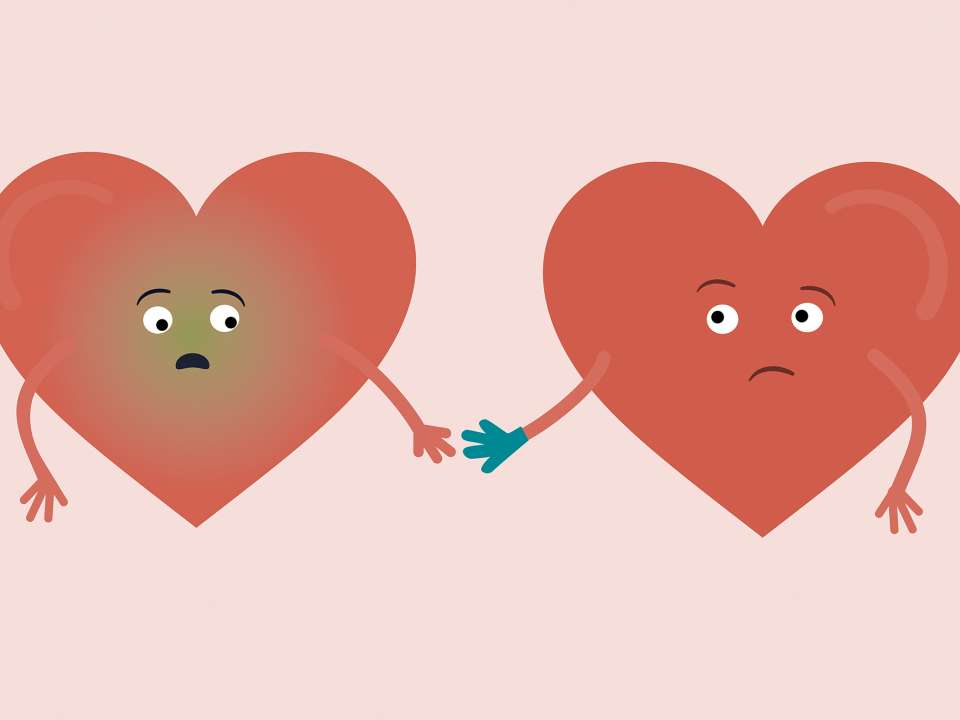
Your skin says a lot about you. There’s a scar from that time you crashed your bike as a kid and stretch marks from when you were pregnant with your little one. There are laugh lines, freckles, beauty marks, tattoos and maybe even a wrinkle or two, all there to tell a story about you.
So when your skin suddenly becomes itchy, red and scaly, well, let’s just say that’s a story you’d rather not talk about.
What’s the culprit behind these irritating skin transformations? It may just be something called eczema, a descriptive term for a skin condition that is characterized by red, inflamed skin.
“The word ‘eczema’ comes from Greek, meaning ‘to boil over,’ because the initial lesions of eczema are really inflammatory and weepy,” says Dr. Markus Boos, an assistant professor of dermatology at the University of Washington School of Medicine and a pediatric dermatologist at Seattle Children’s.
Its specific meaning aside, all you know is your particular brand of eczema is painful and annoying. But you don’t have to just grin and bear the itch. Boos explains what eczema is exactly, the type that most people have and what you can do to stop scratching.
What is eczema?
More than 30 million Americans have eczema, but not everyone has the same form of it.
Some types of eczema, like contact dermatitis, are triggered by things in your environment. Think metal allergies, irritation from washing your hands too frequently or certain chemicals found in soap, makeup and detergent.
There are different symptoms, too. Depending on the kind you have, you may notice dry, scaly redness and an itching sensation in the affected area. Or you might experience greasy, flaking patches and peeling skin.
Keep in mind that regardless of the form you have, eczema isn’t contagious, so you can’t catch it or spread it by touching someone else.
The best way to determine what kind of eczema you have is to talk with a dermatologist about your specific triggers, symptoms and medical history.
What is atopic dermatitis?
Wait a minute, you might be thinking. Isn’t eczema just that red, itchy stuff that flares up every once in a while? Not exactly, Boos says.
Many people use the term “eczema” when they’re actually talking about one specific type: atopic dermatitis. That’s because atopic dermatitis — or AD, for short — is the most common form of eczema, affecting around 18 million American adults.
AD isn’t just the most common type of eczema, either. It’s also one of the longest lasting forms of skin inflammation and can be the most severe.
“Atopic dermatitis is a genetically predisposed condition characterized by red, scaly patches and an itch,” Boos explains.
While mostly young children are affected by atopic dermatitis, studies show that adults can get it, too. How long you have it for and when you get it also varies.
Kids may end up only having AD when they’re young and then outgrow it, but the condition can also last their entire lives. Then there are those individuals who get it for the first time as adults, although this is far less common.
“Between 10% to 30% of kids have it,” Boos notes. “In adults, it’s anywhere from 3% to 10%.”
How old you are when you have AD may also change where and how that skin inflammation appears on your body.
“In infants, we see those red, scaly patches on the cheeks, arms and legs,” Boos explains. “As children get older, that distribution shifts mostly to the crux of the elbows and behind the knees. As adults, they often have more striking facial and hand eczema.”
What causes atopic dermatitis?
While experts don’t fully understand why you have atopic dermatitis, they suspect it has something to do with your genetic makeup and how that affects your immune response.
This may be the reason why some people get AD when they’re young while others don’t get it until they’re adults. It can also explain why those who have atopic dermatitis are also more likely to develop seasonal allergies, food allergies or asthma — something that experts call the atopic march.
To further investigate, researchers have recently started to divide the condition into distinct types called endotypes based on what’s happening in your body on the molecular level.
“We’ve been treating atopic dermatitis as one block of disease, but what we’re realizing as we’re looking at the biochemical profile in either blood or skin biopsies is that there are lots of different chemical pathways to that clinical presentation of AD,” Boos says.
What that means is that while you and your friends may all have atopic dermatitis, what’s happening in your body may be slightly different from what’s happening in theirs.
This new line of research can not only help uncover more about your immune system and eczema as a whole but also lead to more specific treatments.
“We can’t just say for any one individual, ‘The reason you have eczema is this,’” Boos says. “But as we move toward more personalized medicine, we can begin to figure out more fitting treatments instead of a one-size-fits-all approach.”
How can you get rid of atopic dermatitis?
For a long-lasting type of eczema, like atopic dermatitis, Boos takes a two-prong approach.
“First is identifying what’s triggering you” he says. “The second part is, what are we going to do to calm down the inflammation?”
You may notice your AD gets worse in winter, when the air is drier. Or you may realize you experience flare-ups more in the summer, when you’re sweating more and it’s more humid out.
“It’s a little bit of trial and error to try and figure out triggers and what to avoid,” Boos says.
From there, Boos says it’s important to focus on general skincare.
It’s best to avoid daily bathing because harsh soaps can strip your skin of its protective barrier, causing it to lose moisture more easily. While this can work just fine for young children, it’s understandably more difficult to stomach as an adult.
If that’s the case, it’s fine to continue with your daily shower or bath routine. Instead of rubbing your skin with a towel afterward, though, pat your skin dry and then moisturize immediately.
“In general, when we’re approaching skincare, the thicker and goopier, the better,” Boos says. “Ointments and petroleum jellies are better than creams, which are better than oils, which are better than lotions.”
Again, this is all dependent on your individual lifestyle and preferences. It’s easy to slather an infant in Vaseline and call it good, but it’s not such an appealing thing for a teenager or adult. The best kind of skincare regimen is the one that you’ll actually follow on a regular basis, so talk with your dermatologist to figure out a plan that can work for you.
What are medical treatments for atopic dermatitis?
If avoiding triggers and upgrading your skincare routine aren’t doing the trick, Boos says there are several medical treatments that can calm your skin inflammation.
He usually starts with steroid creams, a topical treatment that’s safe to use on all ages as long as you follow your dermatologist’s guidelines.
“You use it for a brief period of time to calm the affected area down, and then from there, you can maintain things with a good skin regimen,” Boos says.
Creams that don’t contain steroids are also available, but these tend to be fairly expensive and may not work as effectively.
Some dermatologists also offer phototherapy, which directs safe wavelengths of light at the affected skin. While this works well, it does require some extra time commitment because you need to go into your dermatologist’s office around three times a week.
If you have a severe case of atopic dermatitis, you may be prescribed an oral medication to help calm down your immune system. The downside here is that this may make you more susceptible to infections and also requires increased health monitoring.
In 2017, the Food and Drug Administration also approved the use of an injection to treat moderate to severe atopic dermatitis in adults and children as young as 12. Taken once every other week, the injection can inhibit inflammation and greatly reduce your itch.
Armed with the right treatments and knowledge, hopefully you’ll be back to loving the story of your skin in no time.

 Healthy ideas for your inbox
Healthy ideas for your inbox





